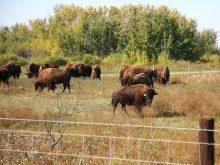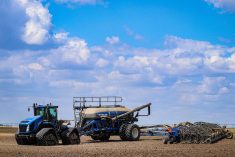University of Saskatchewan researchers have landed federal funding worth more than $37 million to develop revolutionary new plant breeding tools.
Officials in Ottawa announced July 29 that the Designing Crops for Global Food Security initiative at the U of S’s Global Institute for Food Security will receive $37.2 million over seven years through the Canada First Research Excellence Fund.
It is a $1.5 billion federal research fund that supports large-scale projects aimed at establishing Canada as a world leader in areas of innovative, paradigm-changing research.
The Designing Crops for Global Food Security initiative will be an interdisciplinary program comprising plant scientists, computer scientists, engineers and social scientists from the U of S and other Canadian universities and research institutes.
Read Also

National Day for Truth and Reconciliation: Acknowledging the past, seeking a better future
How can the treaty rights of Indigenous peoples be honoured in a way that gives them a proper seat at the table when it comes to farming in Canada?
One of the expected outcomes is the creation of an information database known as the Phenotyping and Imaging Research Centre.
The database will collect detailed plant phenotype data using specialized imaging equipment such as the Canadian Light Source’s synchrotron in Saskatoon.
The database will ultimately contain images and phenotype data taken from plants that have specific characteristics linked to enhanced growth, increased productivity and other beneficial qualities such as improved drought resistance, enhanced nutrient uptake, better disease tolerance and resistance to yield damaging insects.
The database will then be used to identify links between plant traits that are valued by plant breeders and genomic information contained in existing databases.
Maurice Moloney, the food security institute’s executive director, said the project is unlike any other that has been launched in the world.
Preliminary work has taken place in the area of phenotype-focused bioinformatics, but the project hopes to advance knowledge in this area to a new level and clear the way for practical application by plant breeders.
If it proves successful, the initiative could eventually allow plant breeders to identify valuable genetic resources more quickly based on plant performance and characteristics observed in the field.
Plant breeders will eventually be able to produce beneficial plant varieties more quickly and more efficiently.
“The fundamental goal of the project is essentially to bring plant breeding into the high performance computing age,” said Moloney.
“Right now, although we are very successful at plant breeding … but the task of plant breeding in the field is still a very laborious one and it’s also a very subjective one based on the observations of plant breeders who do this type of work…. However, it is possible to automate some of those activities and to build a database of images from all of the test plants that we have in a field trial, for example, in order to determine characteristics of those plants that are indicators of very high performance.”
Moloney said a phenotype imaging database would also allow scientists to cross reference phenotype data with complementary information contained in existing genomic databases.
“If we’ve got DNA sequences in one database and digital (phenotype data) … in another, then we can ask computers to talk to one another and generate the DNA sequences that are responsible for the traits that we value most in plants.”
Moloney compared the concept to the use of facial recognition systems used by law enforcement agencies to sort through hundreds of thousands of images in seconds to identify a suspect or person of interest.
The introduction of a similar system for plant breeders would automate the selection of promising plant lines using computer based selection models.
Breeders could use computer systems to examine thousands of experimental plants in a short period.
“In essence, we can design a very fast track breeding program that concentrates the maximum number of important genes into the breeding material that eventually becomes a plant variety.”
Moloney acknowledged that much of the planned work could accurately be described as proof of concept research.
However, he said the food security institute hopes that a model or prototype system can be established in three years.
From there, several years of additional work and collaboration would likely be required before such a system could be applied.
“We envisage that by 2022, our Phenotyping and Imaging Research Centre will be a unique resource for plant breeders around the world, making possible the development of sustainable new crop varieties with specific desired traits — all at a previously unimaginable speed and scale,” said Karen Chad, vice-president of research at the U of S.
“We are thrilled to be chosen for this major investment that will build on our university’s renowned strengths in crop development, imaging technology and high-performance computing to transform Canada’s capacity to produce food and help feed a growing world.”
The grant is the single largest federal grant ever received by the university.
The National Research Council and Agriculture Canada will be key partners in the project.
brian.cross@producer.com

















